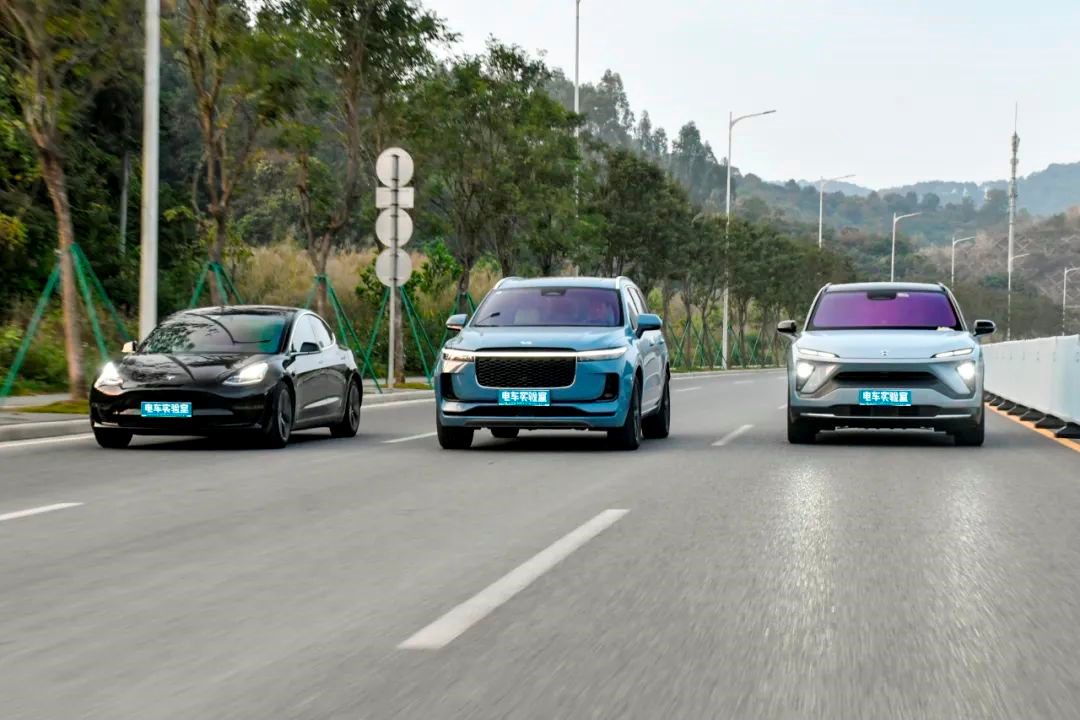Hardware determines the limit, while software determines the experience.
Author: CH_Cheng
After several months of contemplation and preparation, at the end of 2021, we formulated the “EVLab ADAS Evaluation Standard – 2022 Edition” and used this new standard to conduct a comprehensive evaluation of ADAS systems on Tesla Model 3, NIO ES6, and Li ONE.
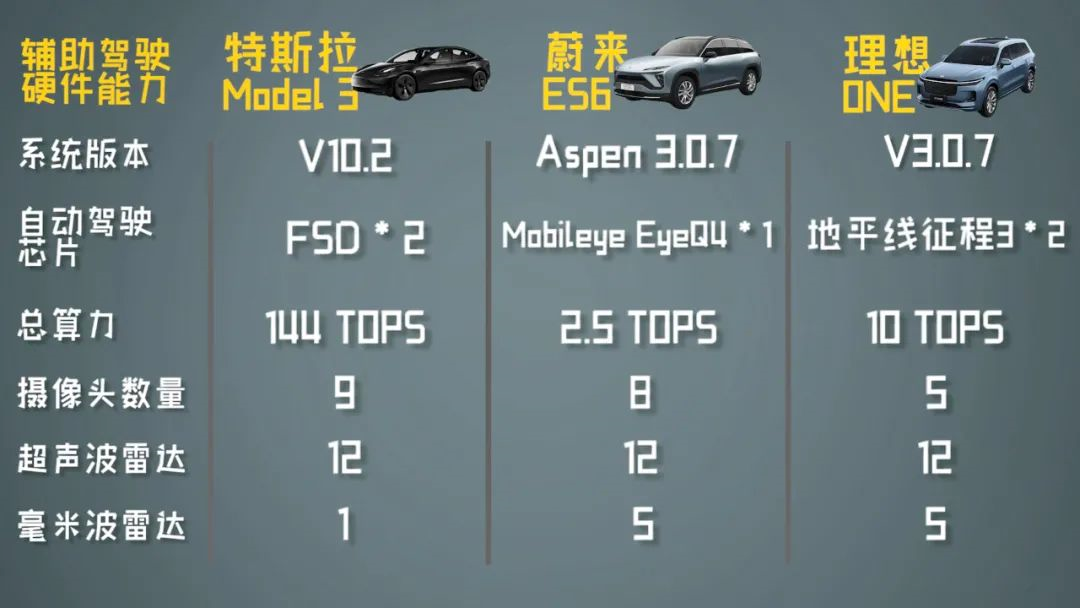
There are significant differences in the hardware of these three vehicles’ ADAS systems:
Tesla Model 3 is equipped with two proprietary FSD autonomous driving chips, with a total computing power of 144TOPS;
Li ONE is equipped with two Horizon Journey 3 autonomous driving chips, with a total computing power of 10TOPS;
NIO ES6 is equipped with a single Mobileye EyeQ4 autonomous driving chip, with only 2.5TOPS of computing power.
However, our evaluation standards do not directly evaluate the hardware, because even with strong hardware, it still needs to be reflected through software and functional experience.
So, what about the ADAS experience of these three vehicles? Does higher computing power equate to a better experience?
Click the video to find out.
↓ ↓ ↓
Not able to watch the video? It’s okay. We have summarized the key points for you below:
1. Test route
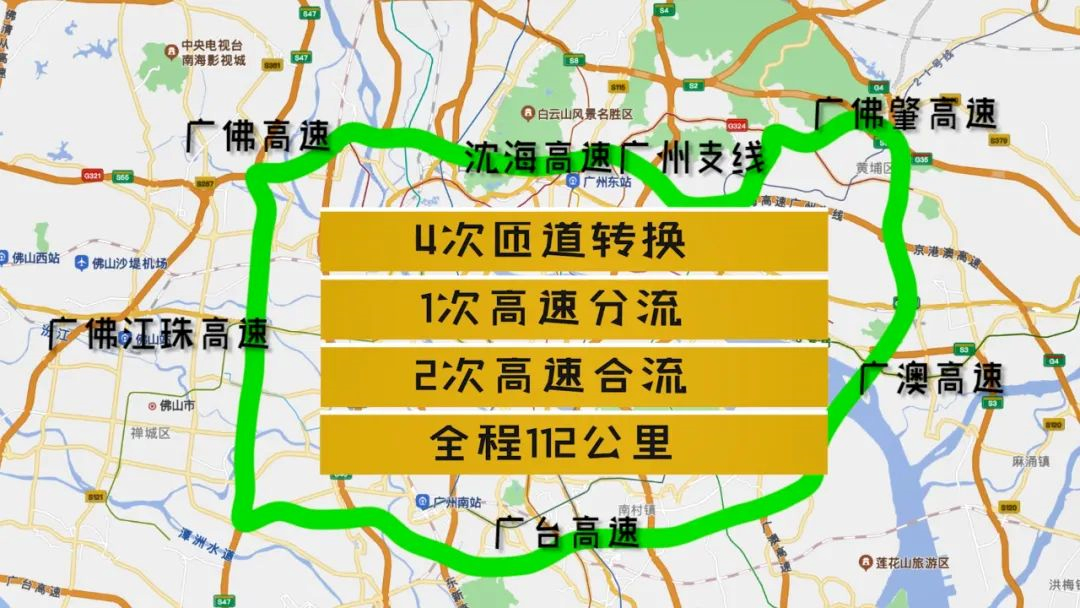
2. Test data
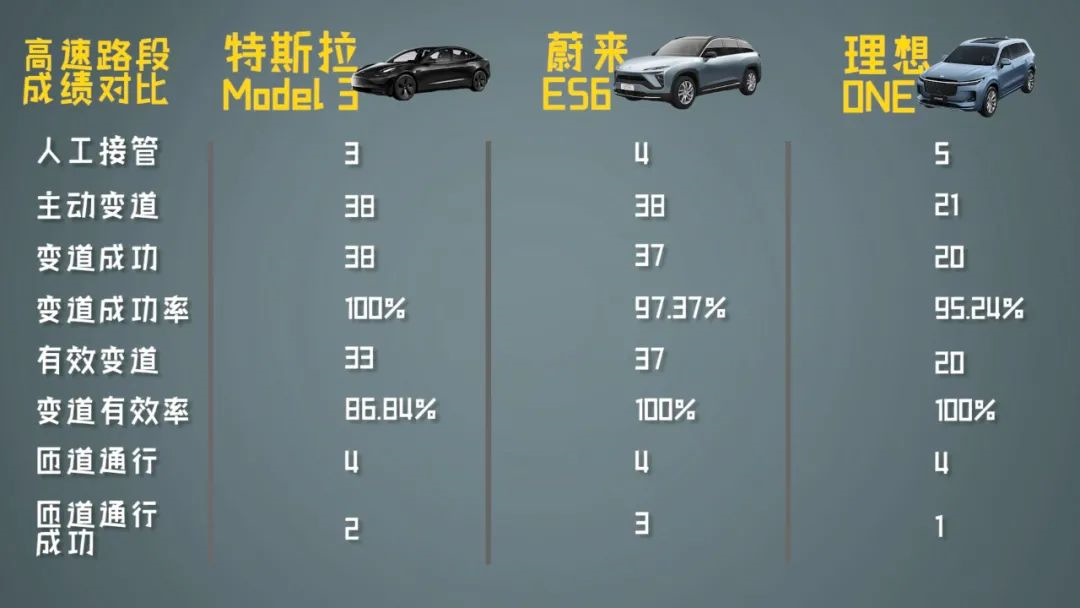
3. Interactive design evaluation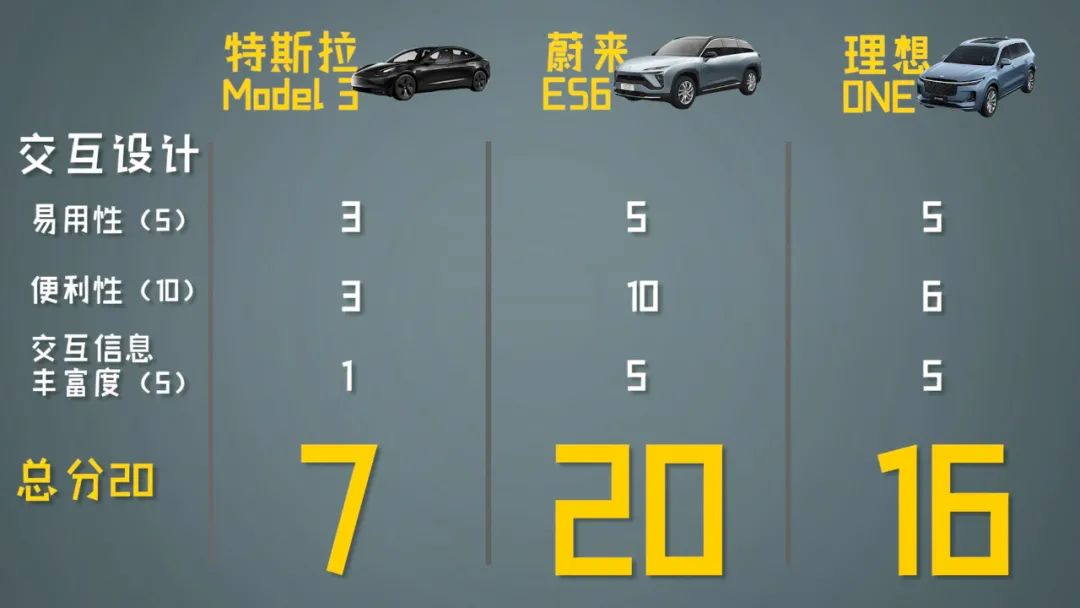
Tesla Model 3:
To activate Autopilot, all you need to do is quickly pull down the right stalk twice. However, this version of NOA will hardly adjust speed automatically on the highway, often requiring the driver to manually adjust it. Even when choosing to change lanes without confirmation, the steering wheel needs to be turned to confirm, and it is very difficult to get the right amount of force. In addition, it does not have voice reminders, so it takes time for newbies to get familiar with what each warning tone means.
NIO ES6:
The assisted driving system supports one-click activation, automatic speed adjustment, and automatic lane change without confirmation. It has the fastest speed to open navigation-assisted driving, and the automatic speed recovery after the system exits is also the fastest. In terms of information reminders, in addition to the reminders on the central console and instrument panel, there are also NOMI’s witty voice reminders, and the classification of safety risks is relatively clear.
LYNK&CO 03Plus:
To activate assisted driving, you need to pull the right stalk inward twice continuously. It has a more exquisite assisted driving simulation interface, which can restore more road information on the central console. It also has rich information reminders such as voice reminders. In addition, it has 3 car-exclusive grip sensing steering wheels, avoiding the problem that the other two cars need to turn the steering wheel to confirm. However, due to the frequent downgrade from navigation-assisted driving, it was downgraded to lane keeping before entering the ramp, and it will also be downgraded before entering the tunnel, so it lost points in terms of convenience.
4. Single-Lane Performance Assessment
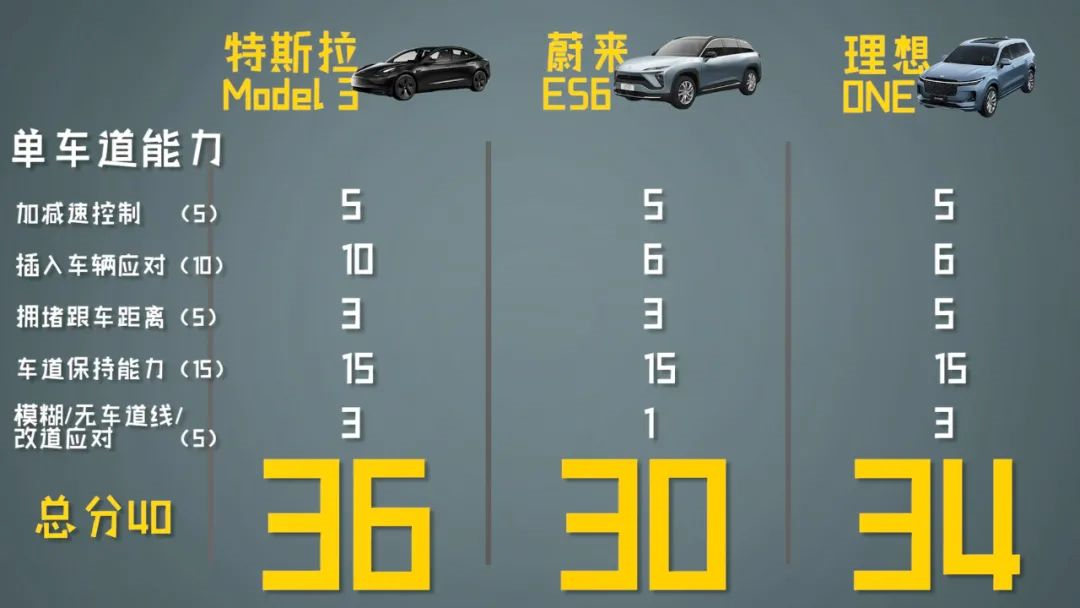
All three cars can perform timely and smooth acceleration and deceleration control, and their cornering abilities are also excellent. They can easily handle sharp turns on the test route. However, in terms of details, the Model 3 still has the strongest and most stable cornering ability, and it has an obvious ability to deal with sudden insertion of vehicles that surpasses the other two cars.
5. Multi-Lane Performance Assessment
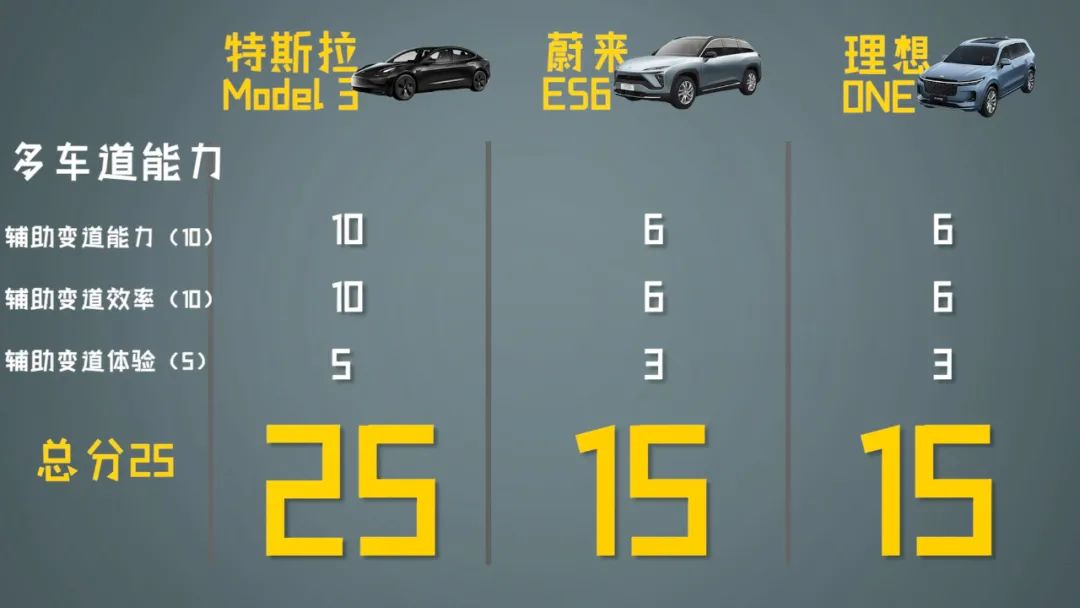
Tesla Model 3:
Model 3’s lane-changing ability is obviously higher than the other two cars. Basically, as long as there is a space of 2 car widths, the Tesla Model 3 can successfully complete the lane change. Its lane change selection is quite decisive, and its action is quite “experienced”.During this test, we found that the Model 3 already has a certain “game” ability when changing lanes. When it changes lanes in a narrow space, it will first expose a part of its body, and then judge whether the vehicles on the side and rear are letting it go. If the vehicles behind are obviously slowing down, it will follow with the lane change action. If the distance is getting closer, it will choose to return to its original lane.
NIO ES6:
After multiple OTA updates, the NOP lane change ability and efficiency of the NIO ES6 have been greatly improved. When it is sure about the situation on the side, it can change lanes immediately after signaling, but the action is not as decisive as the Model 3, and the required lane change space is significantly larger than that of the Model 3.
Li Xiang ONE:
Li Xiang ONE is the most restrained of the three vehicles and has the lowest willingness to change lanes. It basically doesn’t change lanes unless necessary, and the lane change action is also the gentlest, but it does not appear to be sluggish.
- Evaluation of ramp ability:
Tesla Model 3:
In this test, four Model 3’s completed two ramps. Tesla’s NOP cannot be used on many urban expressways or ring roads, and because it is relatively dependent on visual recognition, it exited during the test due to light rain. Moreover, the performance of the Model 3 in ramp passing efficiency is really poor because it strictly limits the speed to 40km/h on the ramp and cannot manually adjust the maximum speed, making our psychological pressure very high every time we enter the ramp.
NIO ES6:
NOP can be used on high-speed roads and urban expressways covered by Baidu’s high-precision maps, with a relatively wide coverage and more stable performance. In this test, it completed three out of four ramps, and the success rate of ramp passing is relatively high. Moreover, in the ramp, the ES6 supports adjusting the maximum speed manually, but because of the limitations of cornering ability, the speed of driving on turns is slower than that of human driving.
Li Xiang ONE:
Li Xiang ONE only completed one ramp out of the four, affected by frequent downgrades as mentioned earlier. After the test, we communicated with the product manager of Li Xiang’s autonomous driving, and they said that this situation is mainly caused by missing or incompatible high-precision map data, and that the system will choose to downgrade for safety reasons. They will improve the data as soon as possible and optimize the system’s downgrade reminders to reduce the rate of downgrades and improve the user experience.
- Conclusion:
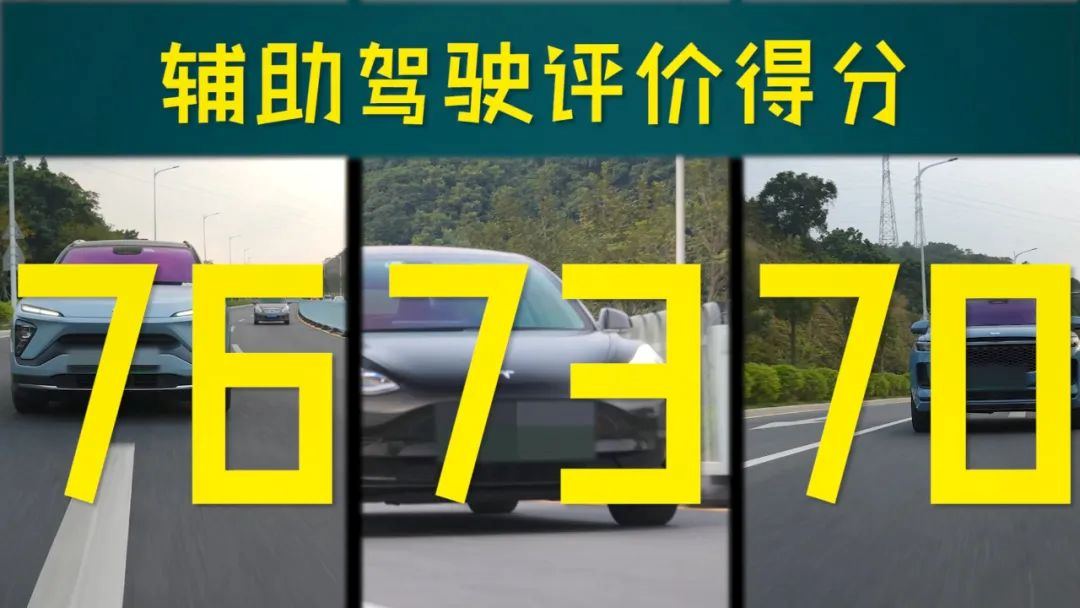
The Comprehensive scores for the three cars are:
- NIO ES6 scored 76 points, ranking first.
- Tesla Model 3 scored 73 points, ranking second.
- LI ONE scored 70 points, ranking third.
NIO ES6:
Although the autonomous driving chip has the lowest computing power, NIO’s autonomous driving engineers have polished a more complete experience of the assisted driving system through continuous software optimization, demonstrating once again the importance of software and calibration in assisted driving.
Tesla Model 3:
Tesla has once again demonstrated the deep potential of a pure visual solution and Tesla’s leading position in the field of autonomous driving. FSD (Full Self-Driving) is Tesla’s firm vision for the future, rather than just a promotional trick. However, it lacks some humanized care and warmth in usage.
LI ONE:
The first version of the navigation assisted driving system is impressive, and there should be a lot of room for improvement through continuous over-the-air (OTA) updates. More importantly, the navigation assisted driving software of LI ONE is standard across the entire 2021 lineup, while the software prices for Tesla’s NOA and NIO’s NOP are both over 30,000 yuan. Compared to this free navigation-assisted driving system with such performance, it is clearly a great deal.
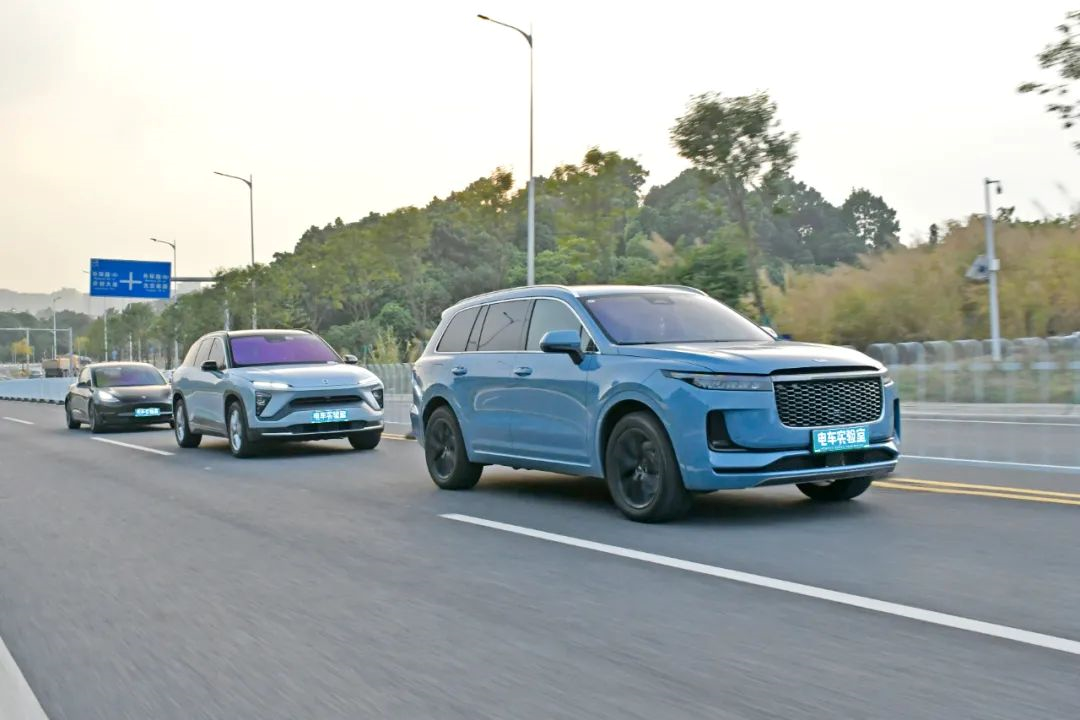
Overall, after understanding the boundaries of their respective capabilities and using them correctly, the assisted driving systems of these three cars are practical and useful, and can effectively reduce the fatigue of long-distance driving and improve travel safety to some extent.
Please note that “using them correctly” means, for example, we now know that Tesla drives slowly on ramps, so we need to take over the driving and accelerate actively after entering the ramp.
More importantly, no matter when and where, when using assisted driving functions, we must always pay attention to the road conditions and be prepared to take over the vehicle at any time.
We should not overly mythologize or rely on assisted driving systems, nor should we negate all positive effects and achievements of assisted driving.
This article is a translation by ChatGPT of a Chinese report from 42HOW. If you have any questions about it, please email bd@42how.com.
